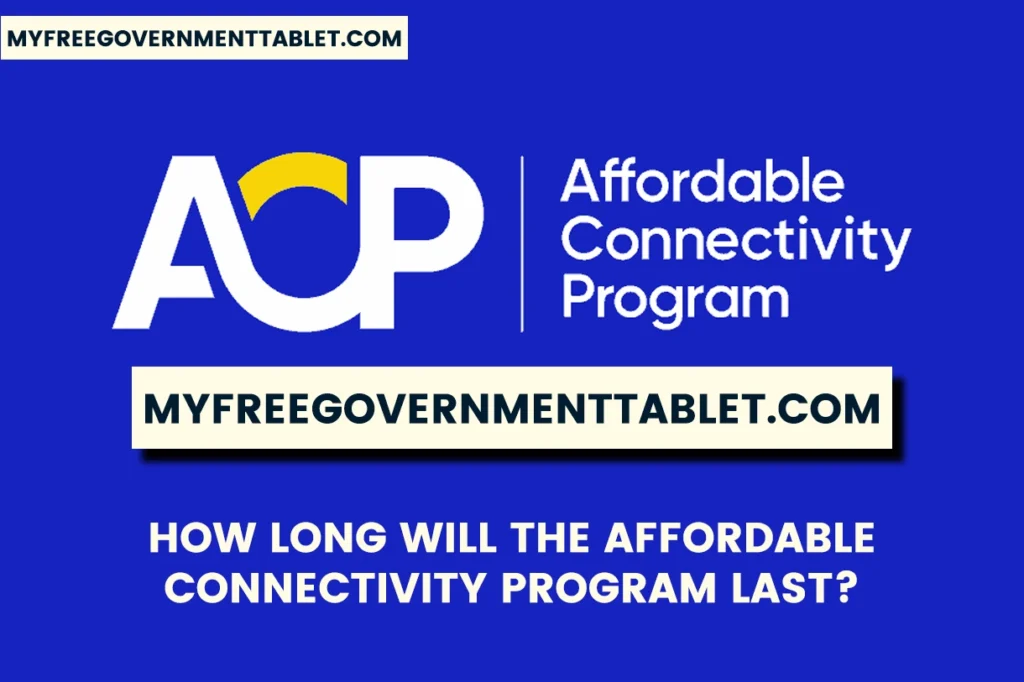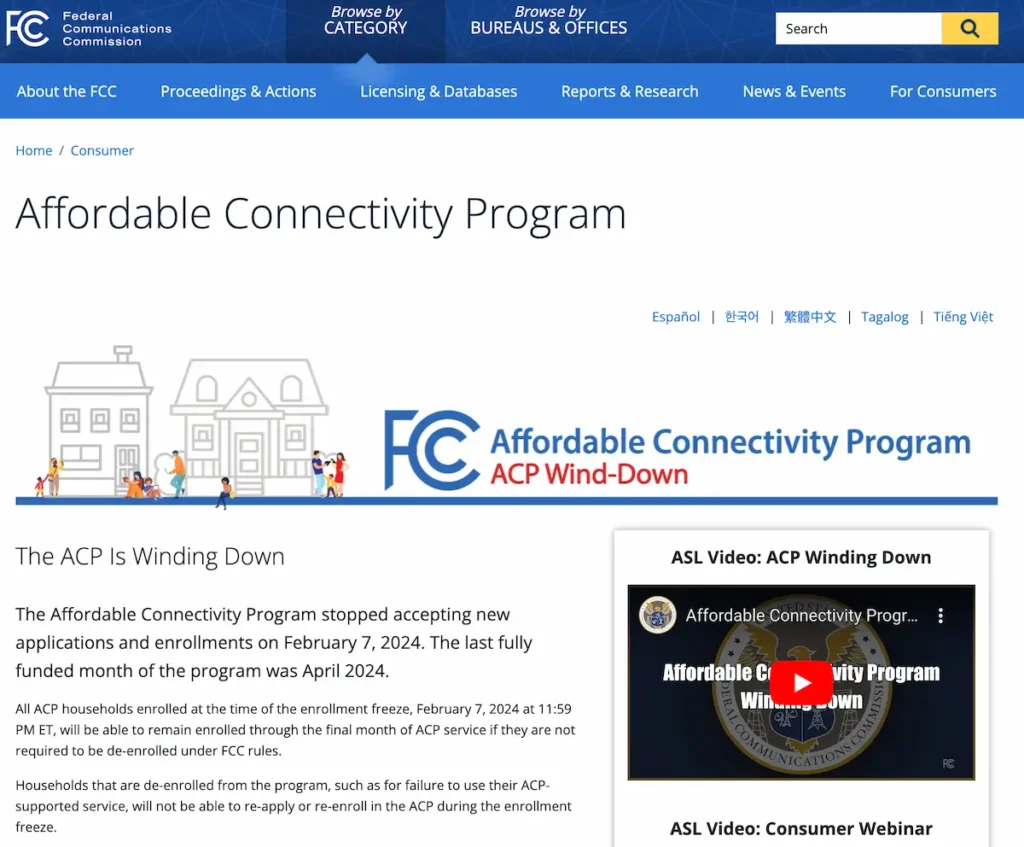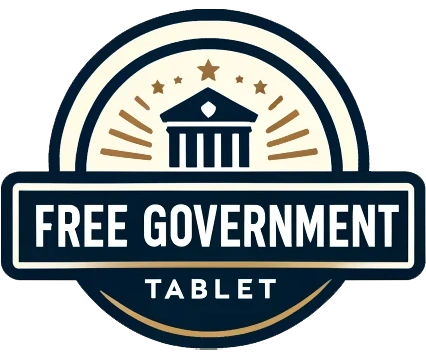How Long Will the Affordable Connectivity Program Last?
Access to information and technology is a fundamental right. Programs like the Affordable Connectivity Program (ACP) aim to ensure that everyone can benefit from these essential services. They provide free devices and phone services, particularly to those who have not had access before.
For many in need, the ACP is a critical resource, offering devices and cell phone services at no cost. You can claim your ACP Free iPad from the government.
However, a pressing question remains: How long will the Affordable Connectivity Program last?
The program's future depends on continued government support and funding. Without a commitment to maintain it, there's a risk it could be discontinued. So, the real question is whether we will see the necessary action to sustain the Affordable Connectivity Program.
- What Is the Affordable Connectivity Program?
- What Does the ACP Offer?
- How Long Will the Affordable Connectivity Program Last?
- Factors Impacting the Duration of the Affordable Connectivity Program
- How Does the ACP Benefit Low-Income Households?
- Who is Eligible for the Affordable Connectivity Program?
- How to Participate in the Affordable Connectivity Program?
- Required Documents to Enroll in the ACP Program
- Is The Duration of The ACP and Lifeline Program the Same?
- FAQs
- Conclusion
What Is the Affordable Connectivity Program?
The Affordable Connectivity Program (ACP) is an initiative from the Federal Communications Commission. It was established by Congress in 2021 through the Infrastructure Investment and Jobs Act.
Curious about how long the Affordable Connectivity Program will last? It began with a substantial $14.2 billion budget, designed to last five years as part of the Internet for All Initiative. This isn't just a temporary fix; it's a significant effort to close the digital divide.
The ACP took over from the Emergency Broadband Benefit program at the end of 2021, continuing support for households that were already benefitting.
The ACP aims to make high-speed internet accessible and affordable for low-income families, ensuring everyone stays connected. Thanks to the ACP, millions of American households now enjoy the internet, collectively saving over $500 million monthly on their bills.
News: In April 2024, the Affordable Connectivity Program, a federal initiative providing monthly financial help of $30 to $75 for low-income families' internet bills, will run out of funds.
Source: cNet.
What Does the ACP Offer?
The ACP offers substantial benefits. It provides $30 a month to qualifying households and $75 each month to those on Tribal lands, making internet plans much more affordable.
Additionally, the ACP includes a one-time discount of up to $100 off the cost of a laptop, desktop, or tablet from participating providers. As of October 2023, over 21 million households have enrolled in the ACP.
The ACP does not consider your credit history or any outstanding debts with providers. If you qualify, you can receive the ACP benefit as long as you remain eligible. You can also apply for a ComLink Free Tablet via ACP at no cost.

How Long Will the Affordable Connectivity Program Last?
The Affordable Connectivity Program (ACP) is planned to last with a $14.2 billion budget for five years. However, without new actions by the end of 2023, funds could run out by mid-2024, risking the program's termination. This could leave many without affordable internet, forcing them to disconnect or pay higher prices.
There is strong advocacy for continued support. In July, the National Association of Regulatory Utility Commissioners (NARUC) urged Congress to maintain annual funding for the ACP, highlighting its importance.
Similarly, the US Conference of Mayors, in June, unanimously called for Congress to renew and increase ACP funding. Over 200 organizations have also signed a letter supporting ongoing funding, emphasizing the program's positive impact.

To extend the ACP's broadband benefits for another five years, an estimated $30-$35 billion is needed. The program's future relies on government decisions, funding availability, and budget priorities.
Factors Impacting the Duration of the Affordable Connectivity Program
Several factors influence how long the Affordable Connectivity Program will last:
- Government’s Commitment: The program's duration depends heavily on the government's dedication to reducing digital disparities. A sustained commitment can significantly extend its life.
- Legal Framework: The laws and regulations establishing the ACP also determine its intended duration.
- Funding Levels: Increased funding can prolong the program, while budget constraints may shorten its lifespan.
- Device Availability: The program's capacity to provide devices like smartphones, tablets, and laptops depends on market trends and technological advancements.
- Technological Advancements: As technology evolves, the ACP may need to adapt, affecting its form and duration.
- Effectiveness and Feedback: The program’s impact and user feedback are crucial in deciding its future. Positive results could lead to an extension.
- Support and Partnerships: The strength and duration of partnerships between the government, non-profits, and other stakeholders also play a role.
- Success Evaluations: Regular assessments of the ACP’s achievements will influence decisions about its continuation or adjustment.
- Economic Conditions: The broader economic environment and budget priorities can affect the program's duration. Economic downturns may pose challenges, while a strong economy might support its continuation.
- Market Competition: The telecommunications market dynamics, including competition among service providers, can impact service affordability and availability, indirectly influencing the ACP’s duration.
How Does the ACP Benefit Low-Income Households?
The Affordable Connectivity Program provides essential support to low-income households, enhancing several aspects of modern life:
- Educational Access: It enables students from low-income backgrounds to access educational content, attend online classes, and use various learning resources, preventing them from falling behind due to lack of internet access.
- Employment Opportunities: The ACP facilitates job searches, online applications, and digital training, improving employment prospects for low-income families.
- Remote Work: Affordable internet makes remote work feasible, especially for those who cannot commute.
- Government Services: The program simplifies access to government services, allowing users to apply for assistance, submit documents, and stay informed about public programs online.
- Healthcare Access: It also improves access to medical information and telehealth services, bridging gaps in healthcare accessibility.
- Social Connectivity: By providing internet access, the ACP helps reduce social isolation, enabling users to join online communities and maintain connections with loved ones.
- Information Access: It supports continuous learning and self-improvement by granting access to a wide range of information and knowledge-sharing platforms. There are many programs offering Free iPads for Seniors.
Who is Eligible for the Affordable Connectivity Program?
Eligibility for the Affordable Connectivity Program (ACP) is based on income or participation in certain government aid programs. To confirm eligibility, applicants must go through the National Verifier.
Key eligibility criteria include:
- Income-Based Criteria:
- Household income must not exceed 200% of the Federal Poverty Guidelines. Here’s a rough guide for various family sizes:
- 1 person: $27,180
- 2 people: $36,620
- 3 people: $46,060
- 4 people: $55,500
- 5 people: $64,940
- 6 people: $74,380
- Add $9,440 for each additional person.
- Household income must not exceed 200% of the Federal Poverty Guidelines. Here’s a rough guide for various family sizes:
- Participation in Government Programs:
- SNAP/Food Stamps
- National School Lunch or School Breakfast Program, including the USDA Community Eligibility Provision
- Medicaid
- WIC (Special Supplemental Nutrition Program for Women, Infants, and Children)
- SSI (Supplemental Security Income)
- Veterans’ Pension and Survivors Benefits
- Lifeline
- Federal Housing Assistance (Public Housing, Section 8 Vouchers, PBRA/Section 202/ Section 811, or affordable housing programs for Indigenous peoples)
- For Residents on Tribal Lands:
- Eligibility extends to those participating in:
- Tribal TANF
- Tribal Head Start (meeting income qualifying standards)
- Bureau of Indian Affairs General Assistance
- Eligibility extends to those participating in:
- Other Eligibility Criteria:
- A household member receiving a Federal Pell Grant during the current award year.
- Enrollment in a school offering free breakfast and lunch to all students via the Community Eligibility Provision (CEP).
- Eligibility for a low-income internet program offered by a participating provider. You can now apply and get a BLU M8L Tablet free from the government.
How to Participate in the Affordable Connectivity Program?
Participating in the Affordable Connectivity Program (ACP) is straightforward. You can apply online at AffordableConnectivity.gov or download, print, and mail the ACP application form.
After applying, contact a service provider that participates in the ACP. Choose your plan and start receiving your discount. Some providers might have their own application processes, so it's best to reach out to them directly.
Required Documents to Enroll in the ACP Program
When applying for the ACP, you must provide documents to verify your eligibility. Required documents may include:
- Verifying Household Income:
- General Assistance letter from Federal or Tribal authorities.
- Last year’s tax return (state, federal, or Tribal).
- Recent pay stubs or job documentation.
- Unemployment or Workers’ Compensation benefit letter.
- Divorce decree or child support award showing income.
- Veterans Administration benefit letter.
- Confirming Participation in Assistance Programs:
- Approval letter from any government assistance program.
- Benefits verification letter.
- Benefits award letter.
- Statement showing benefits received.
- Establishing Identity:
- Birth certificate.
- Passport.
- Permanent Resident Card or Green Card.
- Social Security Number documentation.
- Driver’s license.
- Valid government, military, state, or Tribal ID.
- Certificate of U.S. Citizenship or Naturalization.
- Proving Your Address:
- Utility bill in your name.
- Mortgage or lease statement.
- Recent W-2 or tax return showing your address.
- Any official document confirming your residence if your address has changed.
Is The Duration of The ACP and Lifeline Program the Same?
The Affordable Connectivity Program (ACP) and Lifeline have different lifespans and purposes. Lifeline is an ongoing program with no set expiration, providing consistent support. In contrast, the ACP is a newer initiative without a fixed end date.
The ACP's continuation depends on funding and resources, which could end if these diminish. Lifeline, however, is designed to be a stable source of assistance, not limited by funding constraints.
FAQs
Conclusion
In conclusion, the Affordable Connectivity Program (ACP) is more than just an initiative; it represents a commitment to creating a fairer and more connected future. It aims to provide everyone with the tools needed to thrive in a digital world. Thus, the ACP is intended to be a lasting endeavor.
